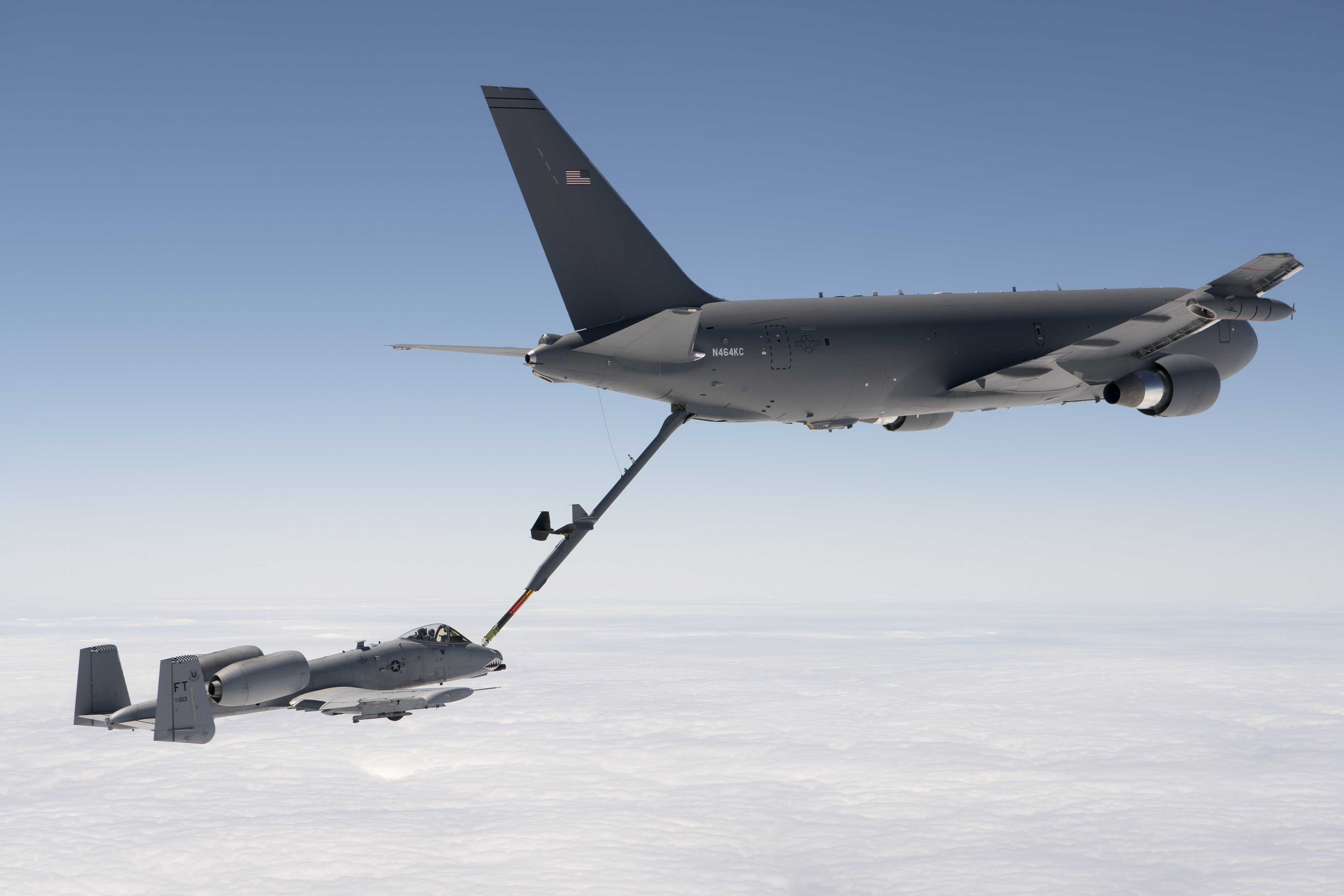A KC-46 Pegasus refuels an A-10 Thunderbolt II with 1,500 pounds of fuel July 15, 2016. Boeing photo by John D. Parker.
Front-end fighters aren’t the only aircraft that may face threats from near-peer adversaries in the future. Air Mobility Command is looking at specific ways to protect its fleet of tankers and airlifters in case they too will be called to fly combat missions in denied airspace.
AMC’s High Value Airborne Asset Study looked at potential shortfalls within its fleet and what areas need to be addressed to ensure mobility aircraft can fly in the next generation of combat against adversaries that can deny airspace. The study, which is modeled after the Air Force’s Air Superiority 2030 Flight Plan, finds three major capability areas the command needs to develop: secure communication, battlespace awareness, and self-protection systems.
“We are committed to doing the hard and necessary work to ensure the guaranteed persistence tankers have always delivered in the past and apply capabilities to ensuring success in the future,” AMC Commander Gen. Carlton Everhart said Tuesday.
The command needs leverage “both proven and existing capabilities,” as well as new and emerging capabilities that will be fielded in the next several years, said Everhart. “Many of our systems, training, and how organizations function will look different by 2030 as we continue to evolve,” he said.
AMC is looking to partner with industry and Defense Department labs to advance its communications systems. As an example, Everhart said AMC could seek to use Link 16 data systems, which have long been in use in fighter and bomber aircraft, to be able to securely communicate beyond line of sight with other aircraft.
For battlespace awareness, AMC is examining existing Radar Warning Receiver technologies that can provide a detailed view of the threat environment for aircrew in real time. For self-protection, AMC wants to partner with industry to develop relatively inexpensive systems with the goal to demonstrate on existing aircraft in the next few years.
